| |
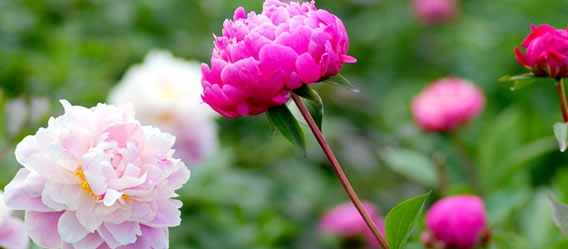
In 2014, Chinese New Year falls on January 31st on the Gregorian calendar used in the West. Also known as the Lunar New Year, Chinese New Year celebrates the arrival of spring and is celebrated according to the lunar calendar used in China and many other Asian countries. Chinese New Year is a time of feasting and festivities; it celebrates the coming of spring, the renewal of life, the unification of family and the coming of a new year.
In previous years we have discussed the Chinese zodiac, which is important in determining the Lunar Year usually named after one zodiac animal out of the twelve. An element out of the five traditional Chinese elements: Metal, Wood, Water, Fire, and Earth also usually accompanies the zodiac animal in identifying the year. 2014 is the year of the Wood Horse.
We have also previously looked at the food served and the customs observed during Chinese New Year. We have also shared the myths behind the celebration of Chinese New Year. This year, we will take a look at the flowers used in celebrating the New Year. Since 2014 is the year of the Green Wood Horse, with a focus on the element of wood, plants, and greenery, it is apt that we begin the Lunar year by looking at the flowers used to celebrate Chinese New Year.
Symbolism of Flowers
Flowers are popular decorations during Chinese New Year and are heavily featured as a lucky symbol during the New Year because the they are a sign of spring and vitality. Flowers, pronounced “Hua” in Chinese, are also a pun for the word prosperity.
Plum Blossoms
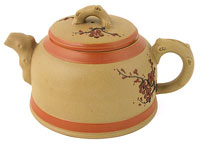 Originating in mainland China along the Yangtze river, the plum blossom, sometimes also known as Chinese plum or Japanese apricot flower in late winter and early spring. Flowering in the mid-winter months of January and February, plum blossoms come in shades of white, pink and red. Plum blossoms have a strong fragrant scent and are unique because they flower before their leaves sprout. Originating in mainland China along the Yangtze river, the plum blossom, sometimes also known as Chinese plum or Japanese apricot flower in late winter and early spring. Flowering in the mid-winter months of January and February, plum blossoms come in shades of white, pink and red. Plum blossoms have a strong fragrant scent and are unique because they flower before their leaves sprout.
Known as “Mei Hua”, plum blossoms are heavily featured in Chinese art and poetry. Plum blossoms are dearly loved all across East Asia, but especially so in China. Seen as the symbol of spring’s arrival, plum blossoms are admired because they bloom the most vividly even during wintery snow, and their fragrance lingers in the air even during the coldest times of the year.
Because of this unique property, plum blossoms symbolize hope, perseverance, beauty, and purity. During Chinese New Year, plum blossoms are popular floral decorations as symbols to welcome the New Year and spring.
Peach Blossoms
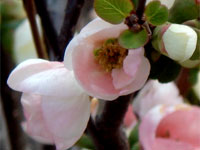 Known as “Tao Hua”, peach blossoms are highly valued in China. Originating in China, plum trees flower in early spring. Like the plum blossom, peach trees flower before their leaves sprout. As a result, ancient Chinese believed that peach are a symbol of vitality. Plum blossoms are pink in color and are delicate five petaled flowers. It is also believed that peach blossoms and peach wood ward away evil spirits. The peach fruit is seen as a symbol of longevity and health and is held in the hand of the “Shou” deity, the longevity deity, of “Fu Lu Shou”—three deities representing “Blessings, Prosperity and Longevity”. Known as “Tao Hua”, peach blossoms are highly valued in China. Originating in China, plum trees flower in early spring. Like the plum blossom, peach trees flower before their leaves sprout. As a result, ancient Chinese believed that peach are a symbol of vitality. Plum blossoms are pink in color and are delicate five petaled flowers. It is also believed that peach blossoms and peach wood ward away evil spirits. The peach fruit is seen as a symbol of longevity and health and is held in the hand of the “Shou” deity, the longevity deity, of “Fu Lu Shou”—three deities representing “Blessings, Prosperity and Longevity”.
Peach blossoms are highly popular flowers during Chinese New Year as it is believed that they bring good luck in romance and for businesses.
Pussy Willow
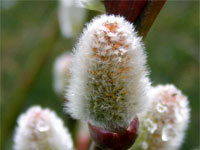 With their numerous white fluffy silky buds on the branch and the young shoots that grow in vibrant shades of jade green, the pussy willow is a highly popular decorative plant during Chinese New Year. Beyond being a seasonal plant that blooms in spring, signifying the passing of winter and the beginning of a new year, pussy willows are known as “Yin Liu” in Chinese, which closely resembles the sounds for the words “cash” and “house”. As a result, pussy willows are commonly found in Chinese homes during the festive period of Chinese New Year and are lucky symbols to welcome prosperity and signify growth. With their numerous white fluffy silky buds on the branch and the young shoots that grow in vibrant shades of jade green, the pussy willow is a highly popular decorative plant during Chinese New Year. Beyond being a seasonal plant that blooms in spring, signifying the passing of winter and the beginning of a new year, pussy willows are known as “Yin Liu” in Chinese, which closely resembles the sounds for the words “cash” and “house”. As a result, pussy willows are commonly found in Chinese homes during the festive period of Chinese New Year and are lucky symbols to welcome prosperity and signify growth.
Bamboo
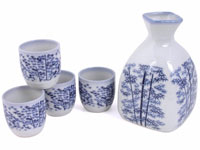 Known as one of the four gentlemen in Chinese culture, bamboo is beloved in China and across East Asia for its beautiful upright form. Native to East Asia, bamboo plants are evergreen and along with pine trees and plum blossoms, bamboo plants are known as one of the “three friends of winter”. Known as one of the four gentlemen in Chinese culture, bamboo is beloved in China and across East Asia for its beautiful upright form. Native to East Asia, bamboo plants are evergreen and along with pine trees and plum blossoms, bamboo plants are known as one of the “three friends of winter”.
During Chinese New Year, a smaller genus of asparagaceae plants, Dracanena braunii, more commonly known as “lucky bamboo” are widely used as decorations or are gifted as lucky symbols.
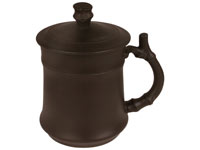 Lucky bamboos are also commonly used in the Eastern practice of Feng Shui as it is believed that they are perfect symbol of thriving water and wood elements. The number of stalks also carries different meanings, three stalks symbolize happiness, five stalks symbolizes wealth and six stalks symbolizes health. Lucky bamboos are also commonly used in the Eastern practice of Feng Shui as it is believed that they are perfect symbol of thriving water and wood elements. The number of stalks also carries different meanings, three stalks symbolize happiness, five stalks symbolizes wealth and six stalks symbolizes health.
Lucky bamboos also typically come in two variations: spiraling stalk or upright stalk. It is also widely believed that spiraling stalks are used as decorations to turn one’s luck around and the upright stalks are symbols to maintain one’s good fortune.
Gladiolus
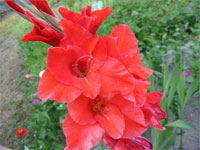 Widely known as “Sword Lily”, gladiolus is another common decorative plant seen in homes during Chinese New Year. In varying shades of red, pink, yellow, light purple or white, gladiolus, like other popular decorative plants during Chinese New Year have numerous blossoms along a single branch. Because flowers bloom steadily from the base of the plant upward to the tips, this carries the auspicious message of “bu bu gao sheng” –a steady rise in career and self-development. The red gladiolus is especially popular during Chinese New Year, as red is seen as auspicious color. Parents of children in school and spouses who wishes a good year ahead for their partner’s career will purchase gladiolus for display during Chinese New Year Widely known as “Sword Lily”, gladiolus is another common decorative plant seen in homes during Chinese New Year. In varying shades of red, pink, yellow, light purple or white, gladiolus, like other popular decorative plants during Chinese New Year have numerous blossoms along a single branch. Because flowers bloom steadily from the base of the plant upward to the tips, this carries the auspicious message of “bu bu gao sheng” –a steady rise in career and self-development. The red gladiolus is especially popular during Chinese New Year, as red is seen as auspicious color. Parents of children in school and spouses who wishes a good year ahead for their partner’s career will purchase gladiolus for display during Chinese New Year
Chrysanthemum
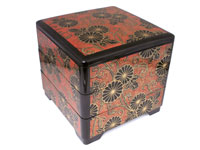 Originating in East Asian, chrysanthemums are highly valued, and are associated with values of morality and integrity. One of the “four gentlemen” in Chinese culture, along with orchid, bamboo, and plum blossom, chrysanthemum is associated with Confucian morals. In Japan, chrysanthemum is a symbol of the royal family. Originating in East Asian, chrysanthemums are highly valued, and are associated with values of morality and integrity. One of the “four gentlemen” in Chinese culture, along with orchid, bamboo, and plum blossom, chrysanthemum is associated with Confucian morals. In Japan, chrysanthemum is a symbol of the royal family.
During Chinese New Year, chrysanthemum plants are sometimes used as decorations. Typically yellow chrysanthemums with many petals. However, because white chrysanthemums carry the meaning of grief and mourning, chrysanthemums are less popular than other auspicious plants used during Chinese New Year.
Mandarin Orange Shrub
Both mandarin orange and tangerines are popular lucky symbols during Chinese New Year. The fruits are given as gifts during Chinese New Year visitations and are used as decorations on homes during the festive season. Known in Cantonese, a Southern Chinese dialect, as “gum”, mandarin oranges’ name is a homonym as the word “gold”, and so is seen as a lucky symbol for prosperity and wealth.
Tangerines, known as “gut” in Cantonese has the same pronunciation as the word “luck” and is another popular plant that is placed in households as decorations.
Peony
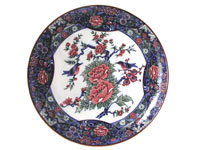 Native to Asia, the peony flower is heavily featured in Chinese and Asian art and is one of the national emblems of China. Known as “Mudan” in Chinese, it is also nicknamed the “flower of riches” and has long been associated with prosperity. Peony is well loved in Chinese culture and holds the title of “King of flowers”. Native to Asia, the peony flower is heavily featured in Chinese and Asian art and is one of the national emblems of China. Known as “Mudan” in Chinese, it is also nicknamed the “flower of riches” and has long been associated with prosperity. Peony is well loved in Chinese culture and holds the title of “King of flowers”.
Because of its long history as a flower associated with prosperity, peony flowers are also often used as decorations in homes during Chinese New Year. Designs of peony flowers are also commonly found on Chinese New Year Cards and red envelopes, which are used to contain cash gifts to wish friends and relatives well during the New Year.
Decorating for the New Year
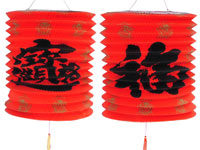 Flowers are inexpensive and elegant ways to brighten up one’s living space. Join in the festivity this year and add a touch of spring to your home with these auspicious flowers. Many of the above flowers often add a unique and festive touch to homes. Combined with festive goodies for New Year and traditional decorations, you can delight your guests and welcome the arrival of the Lunar New Year in style. Flowers are inexpensive and elegant ways to brighten up one’s living space. Join in the festivity this year and add a touch of spring to your home with these auspicious flowers. Many of the above flowers often add a unique and festive touch to homes. Combined with festive goodies for New Year and traditional decorations, you can delight your guests and welcome the arrival of the Lunar New Year in style.
A Prosperous New Year
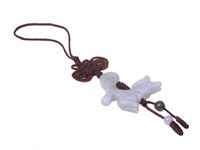 The year of the wooden horse is said to a year of quick successes, surprising adventures and possible romance, as the horse zodiac is associated with speed, travel, and passion. From all us here at Mrs. Lin’s Kitchen, we wish all our readers good health, joy, prosperity and success in 2014! The year of the wooden horse is said to a year of quick successes, surprising adventures and possible romance, as the horse zodiac is associated with speed, travel, and passion. From all us here at Mrs. Lin’s Kitchen, we wish all our readers good health, joy, prosperity and success in 2014!
| |
 |
OUR 2014 NEWSLETTERS
Chinese New Year: Flowers of Celebration
Chinese Hot Pot: Gathering around Cooking
NEWSLETTER ARCHIVES
2014
2013
2012
2011
2010
2009
2008
2007
2006
2005
2004
2003
2002
2001
|
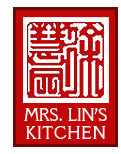


 Known as “Tao Hua”, peach blossoms are highly valued in China. Originating in China, plum trees flower in early spring. Like the plum blossom, peach trees flower before their leaves sprout. As a result, ancient Chinese believed that peach are a symbol of vitality. Plum blossoms are pink in color and are delicate five petaled flowers. It is also believed that peach blossoms and peach wood ward away evil spirits. The peach fruit is seen as a symbol of longevity and health and is held in the hand of the “Shou” deity, the longevity deity, of “Fu Lu Shou”—three deities representing “Blessings, Prosperity and Longevity”.
Known as “Tao Hua”, peach blossoms are highly valued in China. Originating in China, plum trees flower in early spring. Like the plum blossom, peach trees flower before their leaves sprout. As a result, ancient Chinese believed that peach are a symbol of vitality. Plum blossoms are pink in color and are delicate five petaled flowers. It is also believed that peach blossoms and peach wood ward away evil spirits. The peach fruit is seen as a symbol of longevity and health and is held in the hand of the “Shou” deity, the longevity deity, of “Fu Lu Shou”—three deities representing “Blessings, Prosperity and Longevity”. With their numerous white fluffy silky buds on the branch and the young shoots that grow in vibrant shades of jade green, the pussy willow is a highly popular decorative plant during Chinese New Year. Beyond being a seasonal plant that blooms in spring, signifying the passing of winter and the beginning of a new year, pussy willows are known as “Yin Liu” in Chinese, which closely resembles the sounds for the words “cash” and “house”. As a result, pussy willows are commonly found in Chinese homes during the festive period of Chinese New Year and are lucky symbols to welcome prosperity and signify growth.
With their numerous white fluffy silky buds on the branch and the young shoots that grow in vibrant shades of jade green, the pussy willow is a highly popular decorative plant during Chinese New Year. Beyond being a seasonal plant that blooms in spring, signifying the passing of winter and the beginning of a new year, pussy willows are known as “Yin Liu” in Chinese, which closely resembles the sounds for the words “cash” and “house”. As a result, pussy willows are commonly found in Chinese homes during the festive period of Chinese New Year and are lucky symbols to welcome prosperity and signify growth.

 Widely known as “Sword Lily”, gladiolus is another common decorative plant seen in homes during Chinese New Year. In varying shades of red, pink, yellow, light purple or white, gladiolus, like other popular decorative plants during Chinese New Year have numerous blossoms along a single branch. Because flowers bloom steadily from the base of the plant upward to the tips, this carries the auspicious message of “bu bu gao sheng” –a steady rise in career and self-development. The red gladiolus is especially popular during Chinese New Year, as red is seen as auspicious color. Parents of children in school and spouses who wishes a good year ahead for their partner’s career will purchase gladiolus for display during Chinese New Year
Widely known as “Sword Lily”, gladiolus is another common decorative plant seen in homes during Chinese New Year. In varying shades of red, pink, yellow, light purple or white, gladiolus, like other popular decorative plants during Chinese New Year have numerous blossoms along a single branch. Because flowers bloom steadily from the base of the plant upward to the tips, this carries the auspicious message of “bu bu gao sheng” –a steady rise in career and self-development. The red gladiolus is especially popular during Chinese New Year, as red is seen as auspicious color. Parents of children in school and spouses who wishes a good year ahead for their partner’s career will purchase gladiolus for display during Chinese New Year



